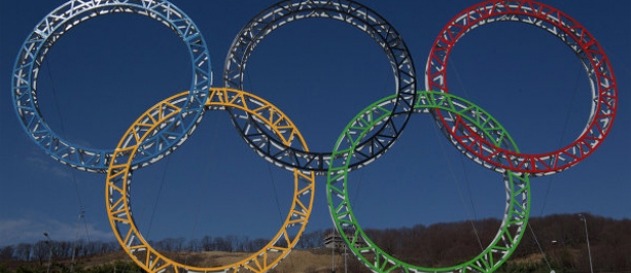
Now that the Super Bowl is (thankfully) out of the way, all eyes in the sporting world will turn to the Winter Olympics in Sochi, which kick off tomorrow night. The arrival of each Olympic Games means, of course, hosts of glossy puff pieces checking in on the sights and sounds of the host city (Hey, what is a Sochi anyway?), endless parades of soft-hitting athlete mini-bios, hour upon hour of the ageless, indefatigable Bob Costas, and of course, the games themselves.
The televising of an Olympics has become, at this point, such a vast machine that, for all the amazing efficiencies on display, it can often serve to drain excitement from the games by focusing mostly on those events and story lines that have been preordained to draw the most eyeballs. In modern Olympics coverage, viewers often get what they want, but might never know of something even more exciting or unusual or record breaking that happened in Sochi when NBC wasn't watching. The internet has changed how the Games get covered somewhat, but what we see on TV has still been pushed through a sieve that only passes through, on the main, figure skating, hockey matches, alpine skiing and the bobsled.
These observations are obviously something of an oversimplification, but I've become so personally inured to the fashion in which this massive sporting event of worldwide importance is manhandled into primetime TV for Americans that some videos I found last night on the NBC website practically put me on the floor. Entitled "Science and Engineering of the 2014 Olympic Winter Games," this collection of ten clips produced in collaboration with the National Science Teachers Association do exactly what they purport to do: cleanly and quickly unpack the science behind different parts of the Olympics for laypeople. Maybe I've missed the boat on these kinds of clips produced to accompany previous Olympics, but this series of five-minute docs seems as comprehensive an effort to bring the science of sporting to the fore as I've seen (bonus points for the accompanying curriculum guides for teachers). I can't embed individual clips, so click here to see the lot of them.
Titles like "Stability and Vibration Damping in Alpine Skiing" may immediately not set the heart racing, but these are generally well (if somewhat anonymously) produced clips that get the job done. Emphasizing clean explanations of the core concepts, a few talking heads (the physics profs NBC drummed up feel straight from Central Casting) and on-the-nose B-roll and graphics, the group of them are an easy watch. Knocking through three or four at a sitting is practically a delight. I also appreciate that the series producers took a step back from the events themselves to give us "The Science of Ice" and "The Science of Snow," two of the more fascinating entries of the bunch. Keep them close at hand as the Sochi Olympics wear on--one of them might just save you from even more Bob Costas.
TOPICS